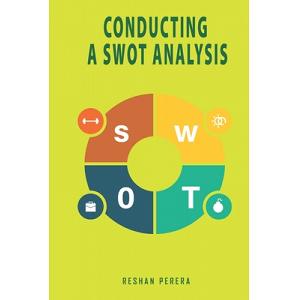“Lady B, wants to sell Nasi Lemak. I told her, there are many stalls selling nasi lemak. Why do you want to sell the same product? She said, I only have that skill. I need to find some income. Husband not working. Can't get a job. I took her around to Bayan Baru area and showed her the many stalls
 |
| More from Less: The Surprising Story of How We Learned to Prosper Using Fewer Resources--And What Happens Next |
What can I do.
The Advice are as follows:
 |
| Conducting A SWOT Analysis |
- Market Zones (Place): The Malay markets have many suppliers at each retail outlet. There are competition within the outlet. Less opportunity to sell. Wheres the Chinese retail outlet deals with only one supplier. Find Chinese market (Lady B is a Malay lady). She has never talk to a chinese retail owner. She attempted a few and failed. I told her to never give up. Continue to search. Finally she found two locations (Chinese Restaurants) to supply Nasi Lemak.
- Product: In order for Lady B to penetrate Chinese market, especuially when there are Chinese Nasi Lemak Stalls nearby restaurants, she has to make the product Unique. Her success was the aroma of Nasi Lemak was scent from 10 feet away, banana & pandan leaves increase the aroma, the sambal according to Chinese tase was crucial to attract customers, Ikan, Telor, Bilis Grade A (expensive but within budget) gave her a competitive advantage to challenge cearby competitor. Her product attract attention. Sold out every day. From 20 units each location, now delivering 40-50 units per location.
- Price: Sold for RM1.00 to retailers, and they sell at RM1.20. More expensive than malay market where you have to supply at RM0.80, and retailers selling at RM1.00.
- Product costs: Per unit direct cost is increasing from RM0.45 to RM0.53 to RM0.62. Why? Material costs going up. AS long as she can maintain around RM0.60, it is still acceptable,
- Promotion: Using what? Banners? Discounts? Use the retailers to communicte with passers by. Prepare some samples. Word of mouth spreads. Use phamplets, place on car screens.
- People - who is accountable to do marketing, operations, procurement, sales. All has to be clear. Motivatin to encourage employees to work on schedule and on time. Smile and politeness in handling customers.
- Packaging - make sure the folding of banana leaves and paper bringup the shape to tall and elongate. Or use white paper with your stanping of company name and hp for communiation.
No comments:
Post a Comment